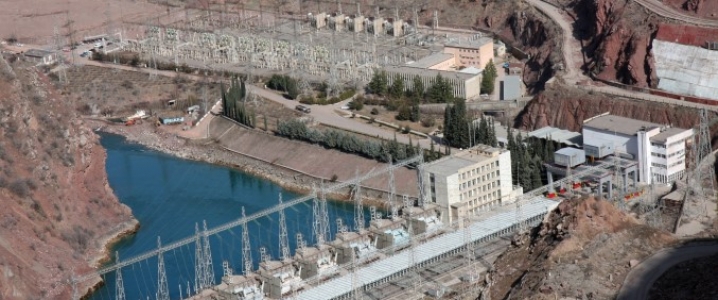Since the dissolution of the Eastern Bloc, energy production in Southeast Europe (SEE) has been stymied by chronic underinvestment. As a result, infrastructure in the region is struggling to meet demand, is unreliable and is in dire need of modernisation. At the same time, it must conform to EU climate and air quality regulations. In short, Southeast Europe is heading toward an energy crisis. In order to avoid this, it must secure massive financial investment into non-polluting energy production, and use that investment in its rapid deployment.
In February 2015, a leaked paper shed light on the European Commission’s plans to eliminate energy islands, or the lack of energy interconnectedness of various regions, citing SEE as a particular challenge. The region itself is moderately interconnected, but its isolation from external energy markets means that energy security remains a problem. Energy import dependency remains significant at between 17 and 73 percent, with almost all countries (with the exception of Romania and Croatia) depending heavily on hydrocarbon imports, primarily oil and gas. The EU energy acquis is concerned with security of energy supply, the internal energy market, energy efficiency, renewable energy sources and nuclear energy. The primary objective of the Energy Union is the creation of an internal energy market that is less reliant on foreign imports, enabling production of energy where it is the cheapest and delivery to where it is needed. Considering the EU is the largest energy importer in the world, this is no mean feat. Related: $9.5B Deal Creates Biggest Player In The Permian
Current energy production in SEE is dominated by hydropower and coal. With decarbonisation goals high on the EU agenda, the use of coal in energy production is very much in its crosshairs. The Energy Community has estimated that in order to comply with industrial emissions directive (IED) requirements, investment of €7.843 bn in current thermal power plants (TPP) is required. Nuclear power is currently only produced in Bulgaria and Romania, while Turkey currently has plans for two nuclear power projects with a combined capacity of 9280MW. Romania currently has plans to expand its nuclear capacity with two new 720MW reactors, while most of the Western Balkans countries have no nuclear capacity, and no plans in place. There are some who argue that nuclear power is the solution to meeting energy security needs in SEE, while also meeting environmental commitments. Renewables offer another solution, with hydro power at the forefront of that potential.
The topography of the region, along with the heavy rainfall make it an ideal candidate for hydro power. Indeed a large amount of the region’s power already comes from hydro, but there is much room for expansion, as well as for modernisation of some of its aging facilities. Indeed there is already aggressive development in this area, but of almost 2,000 in-progress, planned or projected hydro projects, many raise concern about environmental damage, putting their realisation into question. Still, the potential for growth is clear to see, and the region has the potential to build a 100 percent renewable grid by 2050 with the installation of 100 gigawatts of pumped hydro storage. Related: Europe Cracks Down On Diesel Vehicles
As it stands, there is potential to achieve both goals of energy security and decarbonisation via either route, each with their strengths and weaknesses. Expansion of generating capacity has been promoted by both the EU and World Bank, but according to a study on energy and development in SEE, the political and economic conditions do not offer a stable environment for new power generating projects. Focus has instead been on energy transmission and transport, such as the South Caucasus Pipeline (SCP), the Trans Anatolian Natural Gas Pipeline (TANAP), and the Trans Adriatic Pipeline (TAP). These pipelines will connect Azerbaijan’s Shah Deniz-2 gas field and even though most of this energy will be consumed by Turkey, it could secure a part of European natural gas supply. This project, however, will seemingly do little for the region’s energy security. More importantly, it does nothing to capitalize on SEE’s potential for energy generation, and therefore fails to foster energy independence.
It is clear that massive investment is needed within the region if it is to avert an energy crisis. Both renewable and nuclear energy seem well suited to the task, with strong arguments for both. There is still a long way to go, with many hurdles along the way, but with solid options available, the question isn’t about choosing a direction. It is about figuring out how to move forward.
By Gary Norman for Oilprice.com
More Top Reads From Oilprice.com:
- Mexico May Have Just Held Its Last Oil Auction
- The End Of The Status Quo In LNG Markets
- Alberta's Aggressive Renewable Energy Push

















